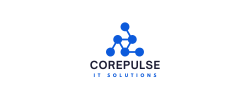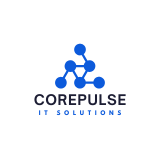Introduction: The New Normal of Work
Remote work’s not a trend anymore—it’s the new normal for the way Australian small and medium-sized enterprises (SMBs) operate. Regardless of whether you’re headquartered in Melbourne, Sydney, or a rural area, chances are some of your staff work from home, a café, or even interstate.
But along with that Flexibility comes risk. An unsecured remote workforce can expose your company to data breaches, compliance issues, and costly downtime. But so too can overly restrictive security irritate workers and hinder productivity.
Then how do Australian SMBs balance it?
1. Start With a Clear Remote Work Policy
Before you even think of software or tools, ensure that you have a remote work policy. This should outline:
- What hardware is approved for use in the workplace
- How the company data should be accessed by staff
- Expectations regarding software updates and backup
- How to report suspicious activity
Make it simple and relevant. Let your staff understand why these policies exist—security isn’t IT’s sole concern; it’s a business-critical one.

2. Implement Multi-Factor Authentication (MFA)
One of the simplest and most effective methods to achieve secure remote access is through using multi-factor authentication on every business-critical app (email, CRMs, cloud storage, etc.).
Cyberattacks in Australia are increasingly exploiting weak login security targeting SMBs. MFA adds a second form of security where users need to authenticate their identity via a mobile device, code, or biometric logon.
Pro tip: Make use of an app such as Microsoft Authenticator, Duo, or Google Authenticator
These products allow secure logons without pinging your employees. They are simple to install and extensively supported on cloud platforms.

3. Provide Secure Devices—Or Have Them Secure Their Own
If you can provide company-owned laptops pre-loaded with security software, great. Otherwise, have employee-owned devices meet your minimum standards.
At a minimum, require:
- Up-to-date antivirus or endpoint protection
- Automatic system updates
- Disk encryption (especially for laptops)
- VPN access for sensitive data
Software like Microsoft Intune

4. Use a Cloud-Based File System With Permissions
Avoid sharing via email attachments or USBs. Use cloud platforms like:
- Microsoft 365 / OneDrive
- Google Workspace / Drive
- Dropbox Business
They offer secure, version-controlled visibility
They also allow permissions control, where staff see only what they need to. For Australian businesses, choosing providers with compliance under the Australian Privacy Principles (APPs) is important.

5. Educate Staff Regularly on Cybersecurity Fundamentals
Conduct frequent, brief training sessions on:
- Identifying phishing emails
- What to do in case a device is lost or stolen
- Safe use of public Wi-Fi
- Software updates matter
Most breaches are not due to hackers—they’re due to simple human mistakes. Free content from the Australian Cyber Security Centre (ACSC) can be made relevant to your team.

6. Monitor Without Micromanaging
Some owners are lured by intrusive tracking software
But this disintegrates trust and fosters pushback. Instead, utilize transparency-enhancing collaboration tools:
- Microsoft Teams or Slack for communication
- Trello or Asana for task tracking
- Toggl for optional, transparent time tracking
These tools encourage accountability and give you visibility without spying.

7. Plan for Incidents—Before They Happen
It’s not “if” something will go wrong—it’s “when.”
Have a clear incident response plan in place that includes:
- Who to notify (internally and externally)
- How to restore lost data
- Who manages communication with clients or regulators
Back up daily and test monthly. Cloud options like Backblaze, Veeam, or Acronis work well for SMBs.

Conclusion: Keep it Simple, Secure, and Scalable
You don’t need to turn securing remote workers into a never-ending chain of rules and bureaucracy. For Australian SMBs, the answer is to:
- Apply simple safeguards
- Train your team
- Choose tools that work with—and don’t slow down—productivity
By striking a balance between security and use, your remote employees can perform at full strength—without jeopardizing your company.

Require Help in Protecting Your Remote Employees?
Looking to better secure your remote workforce without sacrificing productivity? Corepulse IT Solutions helps Australian small and medium businesses protect their systems with tailored IT security, cloud solutions, and managed services. Learn more about our IT security, cloud services, or full range of IT support. Ready to get started? Contact us today for a free consultation.


